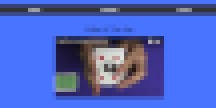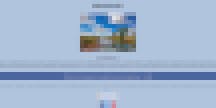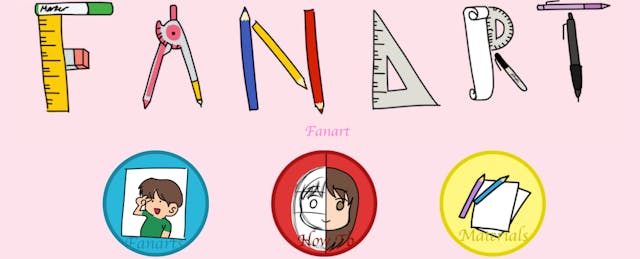What do you do when standing in front of a room full of students who have suddenly surpassed your knowledge level as a teacher with 45 minutes of class time left?
That was the situation I found myself in one day last year when teaching a unit on the basics of HTML for a pilot course on “Exploring Computer Science,” as part of Mississippi’s CS4MS initiative, a program aimed at exposing all students in our state to computer science.
HTML wasn’t the sole focus of that course, but the realization that the students knew as much, or more, than I did about that topic made me feel very anxious inside. In the spur of the moment, I added one of the best tools to my teacher toolbox that I have ever used: the challenge. I challenged them to find interesting aspects of other websites and research and discover for themselves the HTML tags needed to include those in their own websites. What followed was an amazing example of student motivation, creativity, resourcefulness and personalized learning at its best.

Challenge Students (and Get Out of Their Way)
Personalized learning can be tricky for students of any age—but in my experience, it’s especially true of ninth graders. After having mastered the elementary and middle school educational system, freshmen often feel confident that they know what to do reach whatever level they—and others—have set as academically acceptable. Personalized learning can muddy the waters as students (and their teachers) navigate through uncharted territory.
As I began considering the challenges, I realized there were quite a few of them. Specifically, how could I motivate students to push their learning beyond set rubric requirements or specific targets? How do I get them to problem solve without relying on me to direct their thinking? And how do I equitably account for diversity in assessing student work?
Incredibly, the answers came rather organically and suddenly when my quick-thinking challenge opened the floodgates of creativity, putting the endless world of HTML possibilities at their fingertips. The students rose to the challenge and quite rapidly went well beyond my knowledge level, the requirements of the rubric and even the course curriculum.
Within that 45-minute time frame, I learned a valuable lesson as a teacher: Do not consciously or subconsciously limit students’ achievement by fitting them into “the box”—defined by a rubric, curriculum or even the limits of my knowledge—but rather challenge them and get out of their way as they set about exceeding expectations and creating extraordinary work.
I also learned that I shouldn’t always expect to be the expert in the room, and that’s OK. This was a hard pill to swallow at first, but in hindsight, it was the best thing. After that day when I presented them with their first challenge, my preparation couldn’t keep pace with their questions and discoveries, and my students began learning more from their own discoveries as they took ownership of their learning. By the deadline for their first website, all of my students were really impressed with and proud of what they created, because they completely developed it through personalized, discovery learning—the most authentic type of learning there is.

Firing Up Internal Motivation
As a result of the students’ success, the bar was raised well above the curriculum’s requirements for the next website—the rubric was now too rudimentary. Again, I presented the students with a challenge: this time to design truly professional-looking websites that would be critiqued by college professors and published live on the web for anyone to access around the world. For this website, the students were not given a set rubric. They weren’t told what to do or exactly what was expected of them; instead, they had to decide for themselves when it was finished and good enough to publish.
The results simply astounded me! This open-ended challenge brought out an internal motivation and non-complacent drive within each of my students to strive for excellence and make their websites even better. I was no longer a teacher; I was a facilitator and encourager. The students were empowered. Anything the students needed to know to build their websites, they taught themselves and used applied problem-solving to troubleshoot the errors that arose. I set the expectation extremely high from the beginning of the second website, and they absolutely came through.
Mind you, most of my students—comprising all achievement levels, backgrounds, ethnicities and genders—had never written HTML, and hated the very idea of it just three weeks earlier. Now they loved it and were great at it! Their newfound confidence and skills even carried over into the following unit on programming.
As a result, I have learned to set high expectations for students and give them the stepping stones to get there. Ultimately, I believe a few key things led to my students’ success, including:
1) Challenging them to do things they did not yet know how to do but had the resources to discover for themselves
2) Setting no limits on what they could do
3) Having high student engagement and buy-in through personalized learning, and
4) Creating a classroom culture built on rigor, high expectations and non-complacency where failure is never an option. The classroom culture I had built prior to this unit provided the stepping stones they (and I) needed to embrace personalized learning and soar in this curriculum.
I’ll give the last word to one of my favorite Walt Disney quotes, which really sums up what my students discovered when faced with the unknown and the unfamiliar: “We keep moving forward, opening new doors, and doing new things, because we’re curious and curiosity keeps leading us down new paths.”
Shelley Songy (@TheSTEMgeek) teaches Exploring Computer Science at Oak Grove High School in Hattiesburg, MS and coaches the school's SeaPerch Underwater Robotics team. She is a regular presenter at state and national educational technology conferences.


